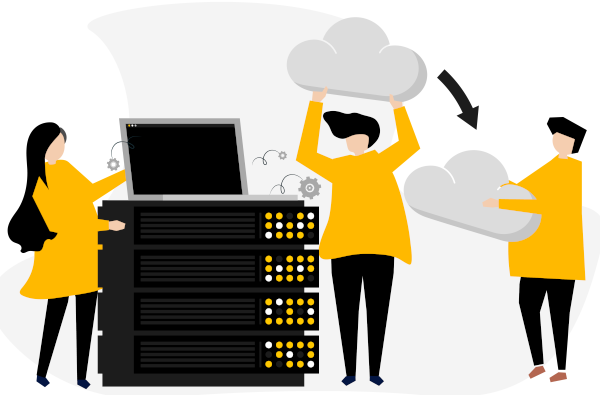A journey to the cloud has to be structured in order to be successful. Cloud services must be evaluated to take advantage of their capabilities and a roadmap should be designed, going from current to future state without interrupting business activities.
The following are common cloud migration strategy considerations.
Rehost (“lift and shift”)
Also known as the forklift migration this strategy allows for a quick move to the cloud. Systems are converted to run in the cloud environment with as little change as possible. When rehosting to AWS there are tools readily available to assist with this process.
Not only is this the fastest and a very cost effective path to utilizing the benefits of a cloud environment. You may also find that applications are easier to re-architect once they are already running in the cloud. This happens partly because your organization will have developed better skills to do so and partly because the hard part – migrating the application, data, and traffic – has already been accomplished.
Replatform (“lift, tinker and shift”)
This entails making a few cloud optimizations in order to achieve some tangible benefit without changing the core architecture of the application. For example, you may be looking to use a managed database service of the cloud provider instead of managing your own database.
Repurchase (“drop and shop”)
This is a decision to move to a different product and likely means your organization is willing to change the existing licensing model you have been using. For workloads that can easily be upgraded to newer versions, this strategy might allow a feature set upgrade and smoother implementation.
Refactor / Re-architect
Typically, this is driven by a strong business need to add features, scale, or performance that would otherwise be difficult to achieve in the application’s existing environment. If your organization is looking to boost agility or improve business continuity by moving to a service-oriented architecture (SOA) this strategy may be worth pursuing – even though it is often the most expensive solution.
Retire
Identifying IT assets that are no longer useful and can be turned off will help boost your business case and direct your attention towards maintaining the resources that are widely used.
Retain
You may want to retain portions of your IT portfolio because there are some applications that you are not ready to migrate and feel more comfortable keeping them on-premises, or you are not ready to prioritize an application that was recently upgraded and then make changes to it again.

While Takala Consulting is vendor agnostic we primarily work with AWS, the current market leader (source Canalys), as well as OVH, Digital Ocean and Vultr who are excellent alternatives and on a mission to simplify the deployment of infrastructure via their advanced platforms.